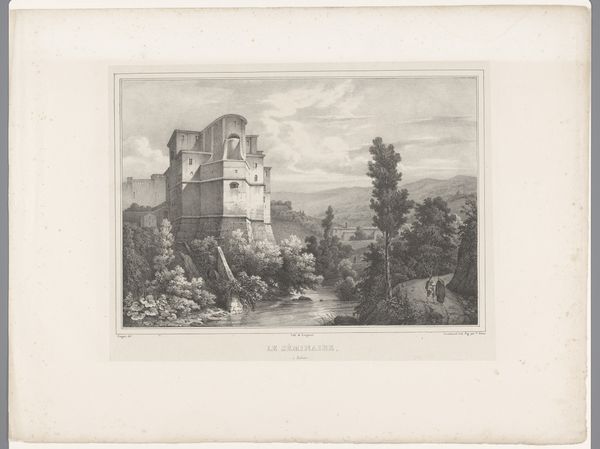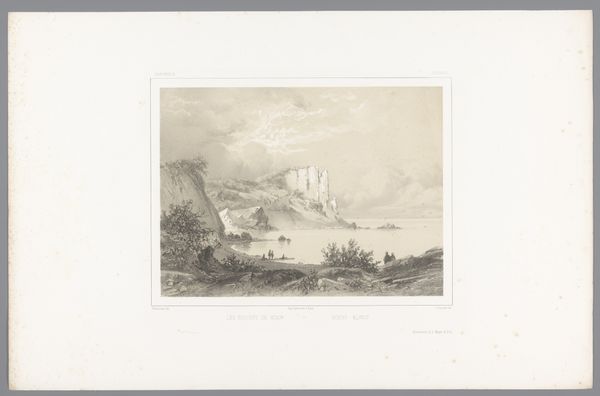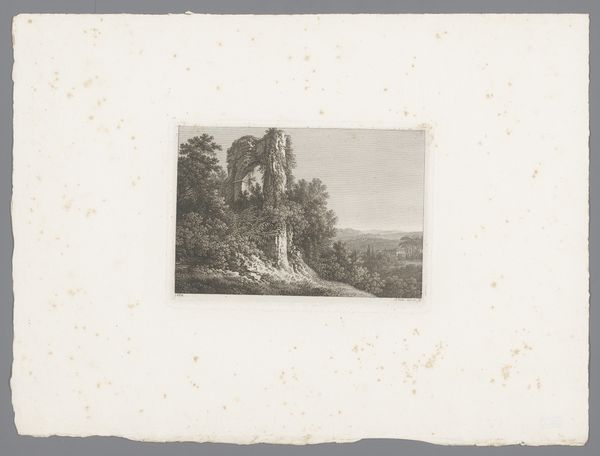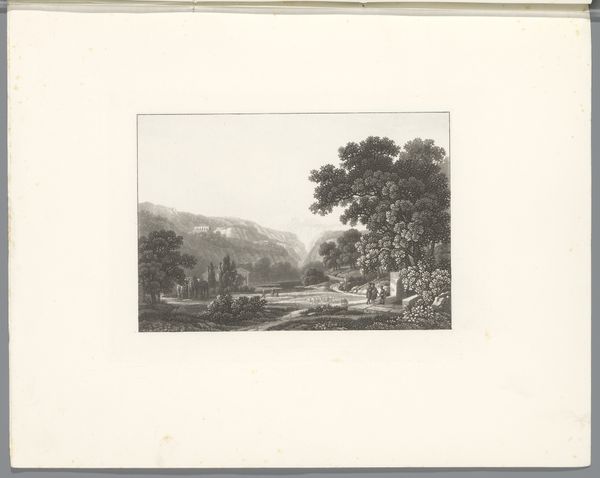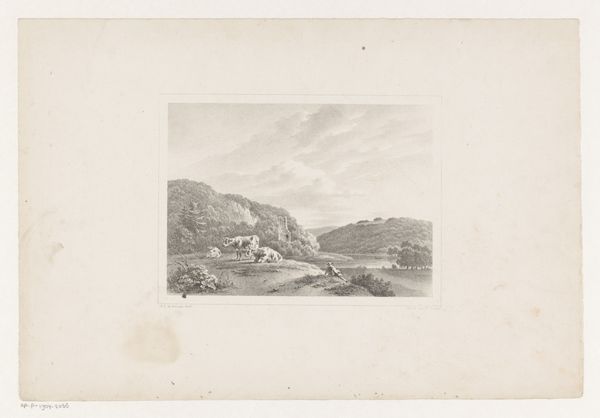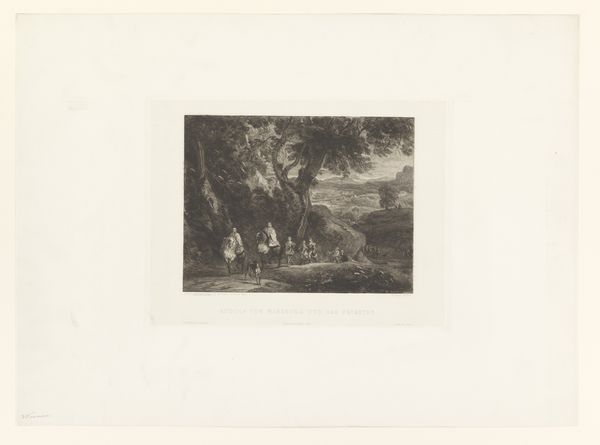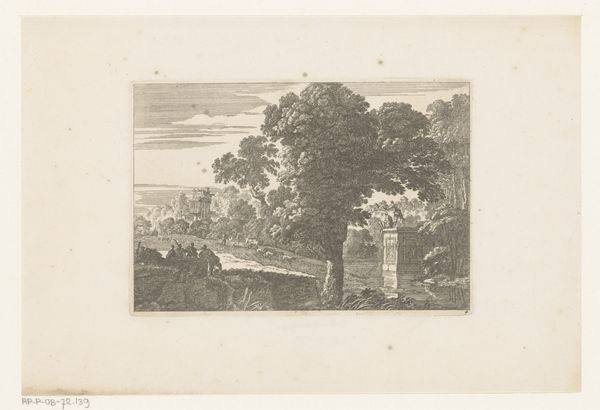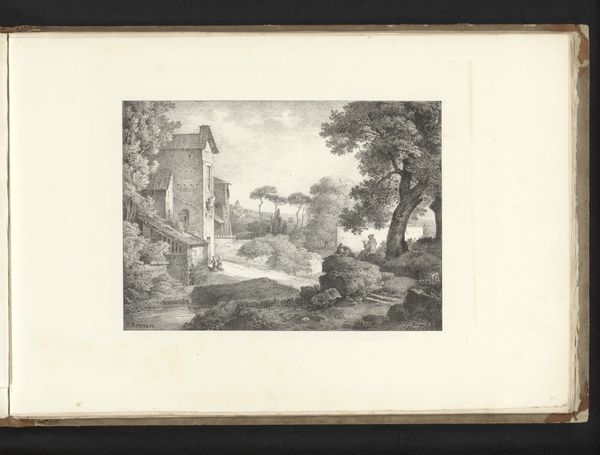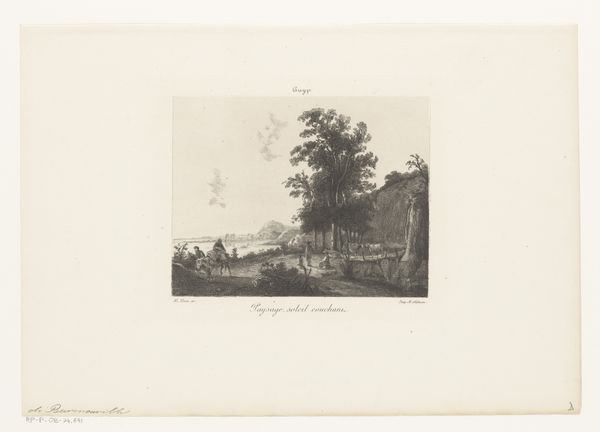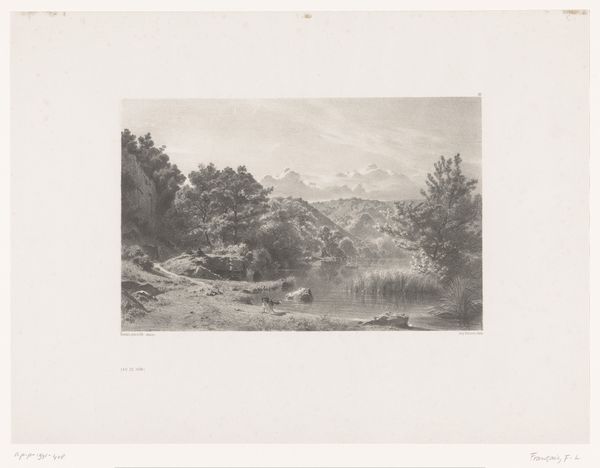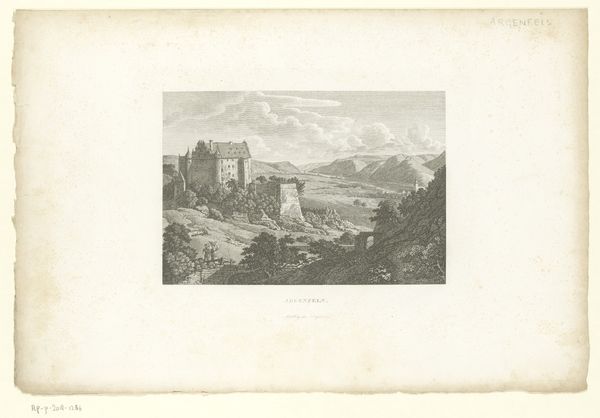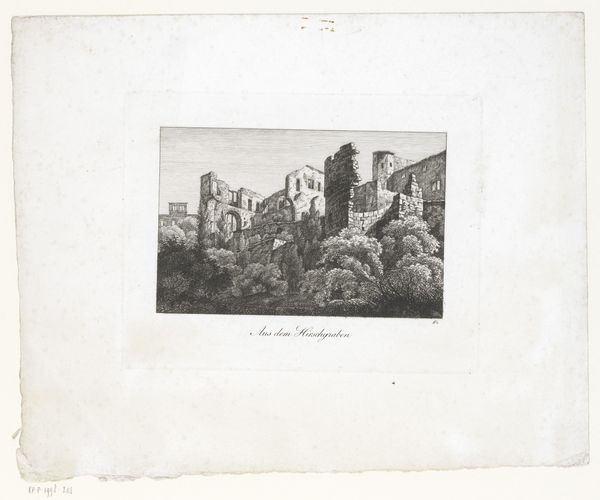
drawing, print, metal, etching, plein-air, graphite, engraving, architecture
#
drawing
#
neoclacissism
# print
#
metal
#
etching
#
plein-air
#
landscape
#
romanticism
#
line
#
graphite
#
cityscape
#
history-painting
#
engraving
#
architecture
Dimensions: height 100 mm, width 147 mm
Copyright: Rijks Museum: Open Domain
Curator: Here we have Philipp Veith's "Landschap met overwoekerde ruïne nabij Rome," or "Landscape with overgrown ruins near Rome," an etching and engraving executed around 1822. It is rendered primarily in monochrome. What springs to mind as you observe the composition? Editor: It feels wistful, almost melancholic. The delicate lines create a scene both beautiful and a little forlorn, like nature slowly reclaiming something grand and imposing. There is the ruin of some architecture on the right that is gradually becoming overtaken with shrubbery. Curator: Indeed. The ruin, while substantial, becomes part of the broader landscape through compositional techniques: the integration of the ruin with the organic is a structural mirroring between hard and soft lines. A symbiosis, if you will. Editor: I love the way Veith uses the etching to create depth. The foreground is quite detailed, with a real sense of texture, then everything softens into this hazy, dreamlike background. The composition directs you toward the distant hills but with multiple visual pathways that provide several means to enjoy the art, as the details in the landscape also engage your curiosity. Curator: The execution showcases an intersection of Romantic and Neoclassical influences, visible in the subject matter – the evocative ruin – coupled with the ordered linearity in the etching style and perspectival arrangement. This allows for historical and philosophical contemplations. Editor: Absolutely! I think about time. Not just the history of the building in the scene, but our own fleeting moment, too. Like, what mark will *we* leave, or will it be something else that returns us to our source like a snake eating its tail. Also, on a formal level, do you find something particularly inviting or intriguing? Curator: Formally, the layering in the landscape presents an ideal tension of receding planes and stark linearity, something that I enjoy about neoclassical approaches when representing space. Editor: Yes, lovely. Ultimately, it is this blend of the sublime with the meticulous, the fleeting with the permanent, that resonates so powerfully. Curator: A convergence meticulously rendered by Veith through precise lines and calculated spatial depth. A perfect encapsulation.
Comments
No comments
Be the first to comment and join the conversation on the ultimate creative platform.
